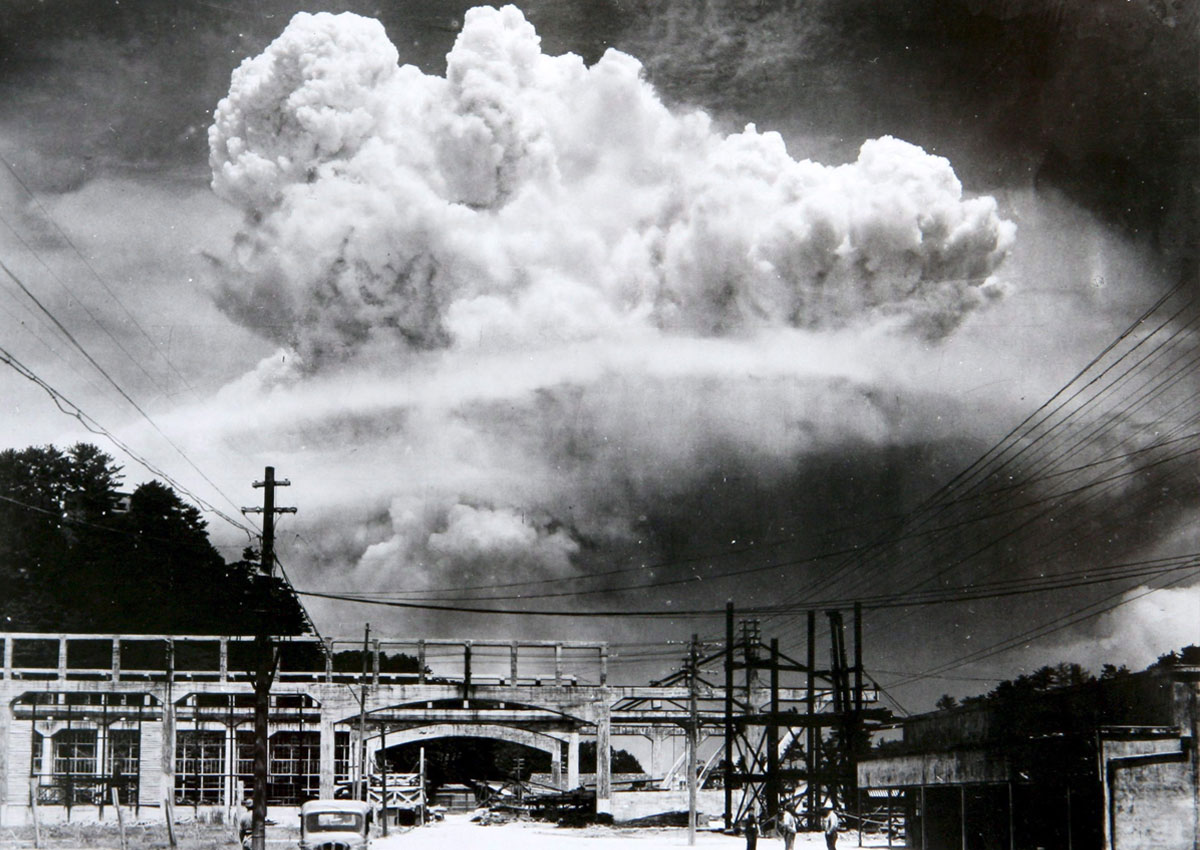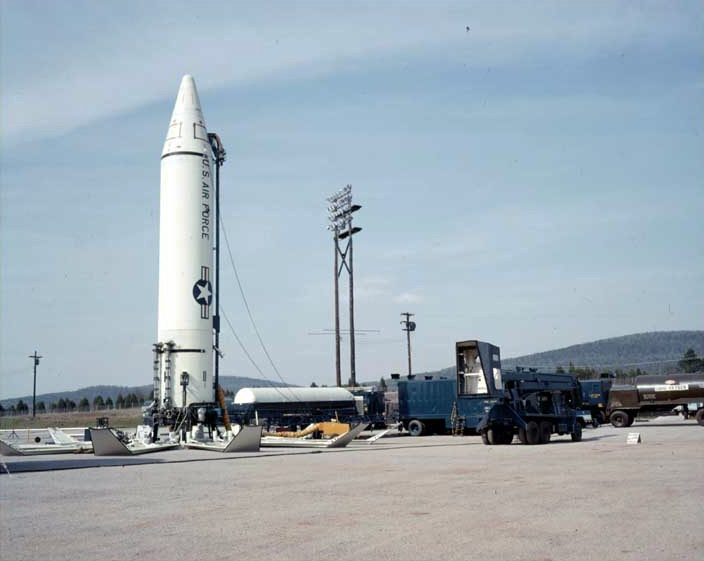Nuclear power – to build or not to build?
By Kiron Kasbekar | 03 Feb 2024

The story of nuclear energy began as a wartime secret, soon became a means to rain death and destruction on two cities in Japan, and has now morphed into a potential means to ward off the climate disaster that is staring humanity in the face.
Nuclear energy has great potential to bring humanity back from the brink of an unprecedented energy crisis and environmental disaster. But can we depend on it?
The use of this technology is questioned by many people who are concerned about the risks and dangers of accidents in nuclear plants, risks associated with the storage of contaminated and dangerous spent nuclear fuel, and the disasters that could happen should fissile nuclear material fall into the wrong hands. Or are they already in the wrong hands?
The big, big question is, whose hands might the wrong hands be? Could it be the North Koreans, who have done a great deal of swashbuckling but only sulked in their corner of the world, or the Iranians, who seem like targets more often than they look like perpetrators? Or the United States? The US, the only nation that actually used nuclear bombs when its two atom bombs descended on Japanese civilian populations in Nagasaki and Hiroshima, causing utter devastation, death and radiation-related diseases for decades afterwards?

According to a report entitled ‘Counting the dead at Hiroshima and Nagasaki’ on the website of the Bulletin of the Atomic Scientists, ‘At Hiroshima, they estimated that out of a pre-raid population of 255,000 people, 66,000 had died, and 69,000 were injured. At Nagasaki, out of a pre-raid population of 195,000, 39,000 had died, and 25,000 were injured. It is of note that even the head of the investigation, Col Stafford Warren, seems to have considered the figure for Nagasaki low.’
You might say that Nagasaki and Hiroshima were a long time ago. 1945. Three quarters of a century ago!
Those deaths should have put all right-minded people against the use of war as a means to achieve their narrow national objectives. That did not happen.
Terrible weapons have been developed and deployed since then, including napalm bombs, bunker busters, ‘massive ordnance air blast’ (MOAB) bombs, and thermobaric weapons.

People kill people
But it’s not the bombs that kill people; people kill other people – and they are happy to use whatever weapons are available. Most recent proof of this has been provided in the latest Israeli attacks on their own Arab enclaves, in which over a few thousands of people can be massacred without the aid of nuclear weapons or napalm bombs.
Could nuclear weapons remain safe in the hands of the Israelis, Chinese or Russians? Or Pakistanis, or Indians, for that matter?
The chances of any of these countries using nuclear weapons are very slim. But they cannot be ruled out. You never know when some megalomaniac might come to power in one of these nuclear-armed countries and decide to unleash a couple of nuclear weapons. Won’t the fallout affect him too? In a burst of populism, he might forget that. Unlikely, he’d think, for he is destined to be great and never to fail!

And now, we realize, there are nuclear weapons that are considered ‘battlefield’ or ‘tactical’ nuclear weapons that would kill less people. What is ‘less’ is not defined.
The appetite for massacre and mayhem remains strong among militarily powerful regimes; and we have seen how, when they go on a killing spree, all limits are thrown to the winds. They often unleash the worst destruction they can. The American bombing of Vietnamese and Iraqi populations, and the Israeli massacre of Palestinian civilians since the first week of October 2023 are proof that those who possess overwhelming power do not have any qualms about using it as brutally as possible.
Just look at the numbers
Until 30th January 2024, more than 28,000 people had been killed, including 26,637 Palestinians and 1,410 Israelis in the Israel–Hamas war. That included 85 journalists, including 78 Palestinian, 4 Israeli and 3 Lebanese; and over 136 United Nations aid agency workers.
And we have seen worse examples of human cruelty.
American conventional (non-nuclear) bombs killed many million people in Vietnam from 1955 to 1975, right up to the 1980s, and between half a million and a million in Iraq from 2003 to 2011.
The website brittanica.com says: ‘The human costs of the long conflict were harsh for all involved. Not until 1995 did Vietnam release its official estimate of war dead: as many as 2 million civilians on both sides and some 1.1 million North Vietnamese and Viet Cong fighters. The U.S. military has estimated that between 200,000 and 250,000 South Vietnamese soldiers died in the war.’
According to Wikipedia, ‘As of 30 January 2024, over 28,000 people (26,637 Palestinian and 1,410 Israeli) have been killed in the Israel–Hamas war, including 85 journalists (78 Palestinian, 4 Israeli and 3 Lebanese) and over 136 UNRWA aid workers.’ Overwhelming and indiscriminate force has been used against a civilian populace by America-backed Israeli armed forces.
In other words, if we add up all the conflicts since the Second World War, ‘conventional’ weapons have killed many more times the number of people than nuclear weapons.
The human toll keeps mounting.
Add up the number of people killed after the Nagasaki and Hiroshima bombings, and you will find that ‘conventional’ (non-nuclear’) weapons have killed and maimed far more people.
The ‘conventional’ conflicts have got worse in the past two decades. And they are getting worse still; for the most heavily armed and technologically advanced countries can now use drones to attack and destroy remote targets, without having to deploy troops to the battlefield. We now have ‘soldiers’ sitting at computer consoles in their home countries manipulating drones, positioning them and striking positions thousands of miles away.
Brinkmanship
In short, war has become a much safer game for warmongers who are well-armed with technology as well as weaponry. Some powerful countries have displayed an overwhelming inclination to destroy and kill to achieve their economic and military goals.
US President Richard Nixon created Operation Giant Lance, in which a squadron of 18 B-52 Stratofortress bomber planes loaded with nuclear weapons would fly in 6-bomber sorties over northern Alaska in the direction of the Soviet Union. The idea was to convince the USSR that Nixon was ready to launch nuclear war in order to win the Vietnam War. A squadron of six nuclear-armed B-52s took off on 27th October 1969 in a way that they were detectable by the Soviet Union. Nixon cancelled the operation on 30th October.

Earlier, in 1962, the Cuban Missile Crisis, a 13-day confrontation between America and the Soviet Union, had brought the world to the brink of a nuclear war. It had been triggered by American attempts to invade Cuba and after the US had deployed nuclear missiles in Italy and Turkey, targeting the Soviet Union, leading to the Russians deploying nuclear missiles in Cuba as a defensive move. After a dangerous stand-off, the Russians withdrew. The world looked on with bated breath.
Nothing happened. But it could have, and set the world on fire. And for that very reason the world needs to move on, and work hard to ban all nuclear weapons. We still do not have an effective nuclear weapons ban treaty. The countries with the most weapons and with the greatest potential to unleash nuclear bombs on others are the ones that have refrained from signing the latest Treaty on the Prohibition of Nuclear Weapons, or the Nuclear Weapon Ban Treaty, signed by other countries on 20th September 2017.

There only two things that have prevented nuclear weapons from being used. One is the terribly negative publicity it would have created. And the other thing is the threat of nuclear retaliation.
So does that make nuclear weapons safer? No. As long as nuclear weapons remain in even a few countries’ arsenals, the risk of their use will remain. The only way to free the world of the danger of nuclear war is to bundle up all the existing nuclear weapons, pack them in a spaceships and send the spaceship hurtling into an orbit that will land it in the Sun!
So what I’d say is that nuclear energy is a great idea. But it will work only if we can assure a world without wars and after we have found full safeguards against nuclear accidents and safe ways to store or dispose of nuclear waste from nuclear power plants. And that can only happen when all countries don’t just sign a nuclear weapons ban treaty but also destroy all their nuclear weapons.
What are the chances of that happening? Dim, is the best I can say.



















